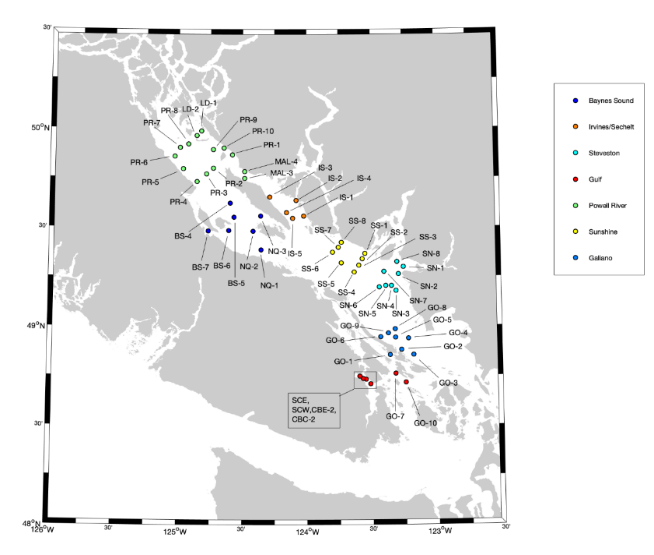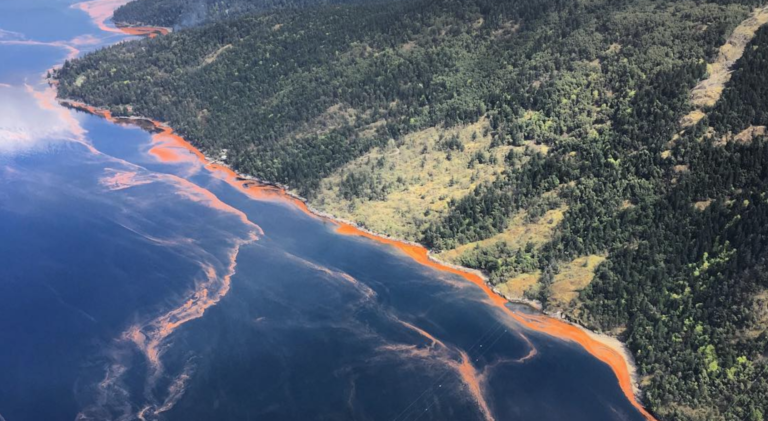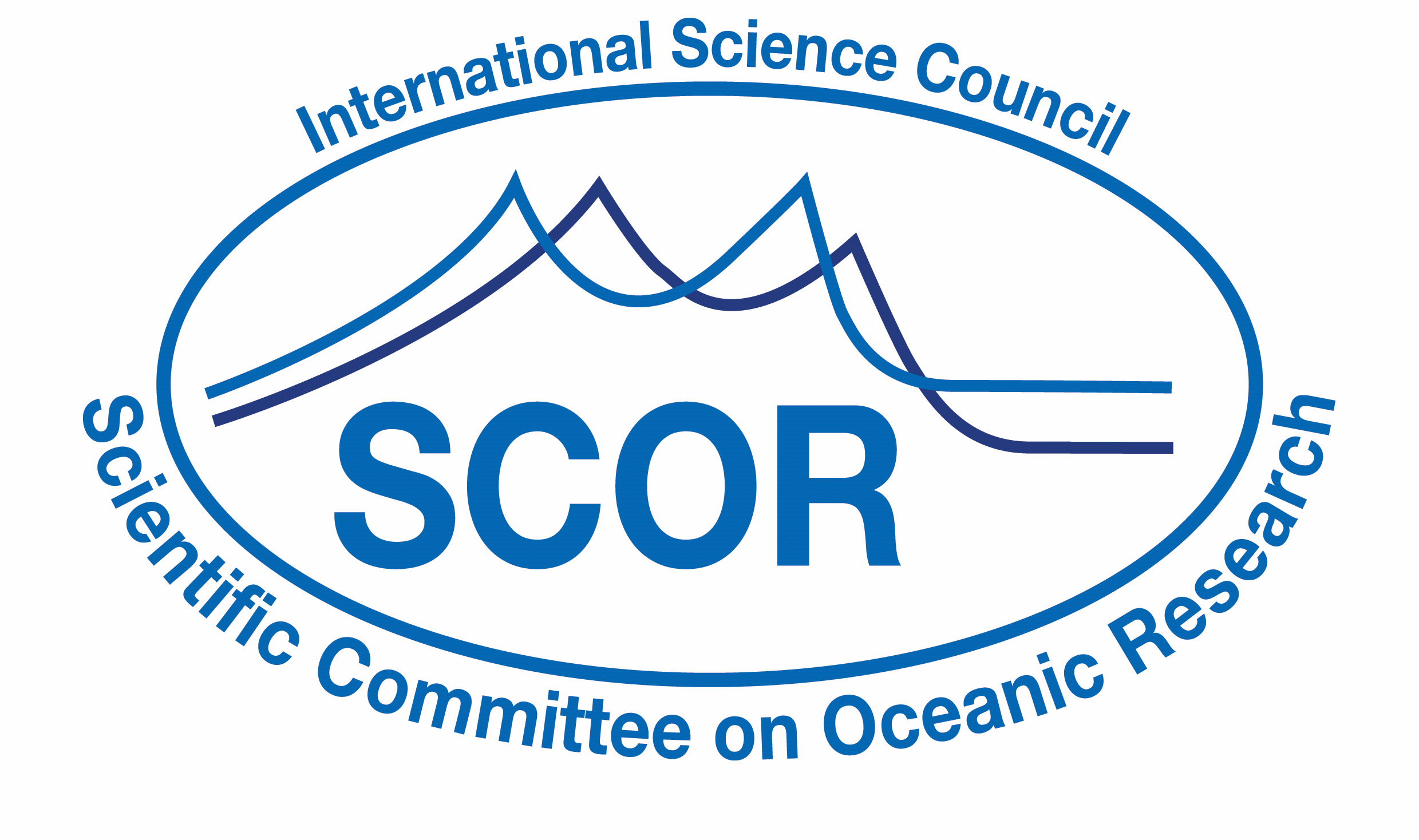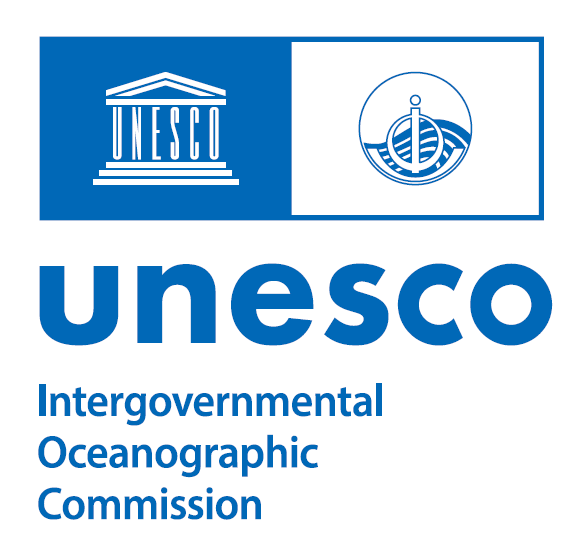PROJECT TITLE: Citizen Science Program in the Strait of Georgia, Canada
Scope: Regional
Type: Monitoring
Timeframe: January 2015 to December 2021
Program manager: Dr. Isobel Pearsall
Address: Pacific Salmon Foundation, 1682-300 West 7th Avenue, Vancouver, BC, V6J 4S6, Canada
E-mail: This email address is being protected from spambots. You need JavaScript enabled to view it.
Home page URL:
https://marinesurvivalproject.com/research_activity/list/citizen-science-program/
http://sogdatacentre.ca/people/citizen-science/
https://www.facebook.com/CitizenSciencePhytoplankton/
Other key people:
Nicole Frederickson (program coordinator)
Svetlana Esenkulova (harmful algae component)
Objectives:
The goal of the Citizen Science Program in the Strait of Georgia is to collect and disseminate detailed oceanographic data. This program was implemented by the Pacific Salmon Foundation (PSF) with support from the Oceans and Networks Canada (ONC) and Department of Fisheries and Oceans (DFO). The program has been operating since 2015, and was endorsed by the GlobalHAB program in January 2020. Trained members of local communities (referred to as “citizen scientists”) collect information at ~55 defined locations (Fig. 1) on, or as close to, the same day approximately every two weeks between February and October, annually between 2015-2021. At each station, CTDs (conductivity, temperature, depth) are deployed and water samples are taken for nutrient analysis and phytoplankton taxonomy. The scope and coverage of this program are unprecedented; more details about this program and the CitSci dataset, as well as figures showing oceanographic conditions over 2015-2019, are provided in Pawlowicz et al. (2020). Data are stored at http://sogdatacentre.ca/

Figure. 1 Map of the Strait of Georgia with CitSci program sampling locations in 2020.
Different colours represent different patrols.
During six years of observations to date, heavy blooms of potentially harmful blooms were caused by Noctiluca scintillans (Fig. 2, 3), Heterosigma akashiwo, Pseudo-nitzschia spp., Rhizosolenia setigera, Gonyaulax spp., and Dictyocha spp. Investigation of the relationship between environmental factors and bloom dynamics is underway.

Figure. 2 Noctiluca scintillans bloom, Salt Spring Island, May, 2 2018. Photo by Michael Bahrey.

Figure. 3 Cell of Noctiluca scintillans with Chaetoceros spp. in food vacuoles,
Citizen Science sample. Photo by Svetlana Esenkulova
Outcomes:
Pawlowicz, R., Suzuki, T., Chappel, R., and Esenkulova, S. 2020. Atlas of Oceanographic Conditions in the Strait of Georgia (2015–2019) based on the Pacific Salmon Foundation’s Citizen Science Dataset. Can. Tec. Rep. Hydrogr. Ocean Sci. 3374: vii + 116 p.
Esenkulova, S., Suchy, K., Pawlowicz, R., Costa, M., & Pearsall, I. Harmful algae and oceanographic conditions in the Strait of Georgia, Canada based on citizen science monitoring. Frontiers in Marine Science,1193.
Annual reports of the harmful algae observations are published in the State of the Pacific Ocean:
- 2019 - Esenkulova, S., Frederickson, N., Pearsall, I. Harmful algal blooms in the Salish Sea. https://waves-vagues.dfo-mpo.gc.ca/Library/40884569.pdf
- 2018 - Esenkulova, S., Pearsall, I. Harmful algal blooms in the Salish Sea. https://waves-vagues.dfo-mpo.gc.ca/Library/4081306x.pdf
- 2017 - Esenkulova, S. Pawlowicz, R., Pearsall, I. Nutrients, the phytoplankton community and harmful algae in the Salish Sea. http://waves-vagues.dfo-mpo.gc.ca/Library/40717914.pdf
- 2016 - Esenkulova, S., Pearsall, I. The phytoplankton community in the Salish Sea. http://waves-vagues.dfo-mpo.gc.ca/Library/40617944.pdf
Several reports were published in the Harmful Algae News:
- Esenkulova, S., Pearsall, I., 2019: Citizen Science oceanography in the Strait of Georgia, Canada – an overview of five years operations. Harmful Algae News 63, 12-13. http://www.e-pages.dk/ku/1439
- Ecology of Alexandrium spp. in the Strait of Georgia, British Columbia, Canada 2015. Esenkulova, Pearsall, Novak, 2017: Harmful Algae News 56, 7-8. http://www.e-pages.dk/ku/1276/
- Observations of Heterosigma akashiwo bloom and associated wild salmon lethargic behavior in Cowichan Bay, Canada, 2014. Esenkulova, Luinenburg, Neville, Trudel, 2014. Harmful Algae News 50, 16-18. http://www.e-pages.dk/ku/1086/

